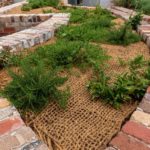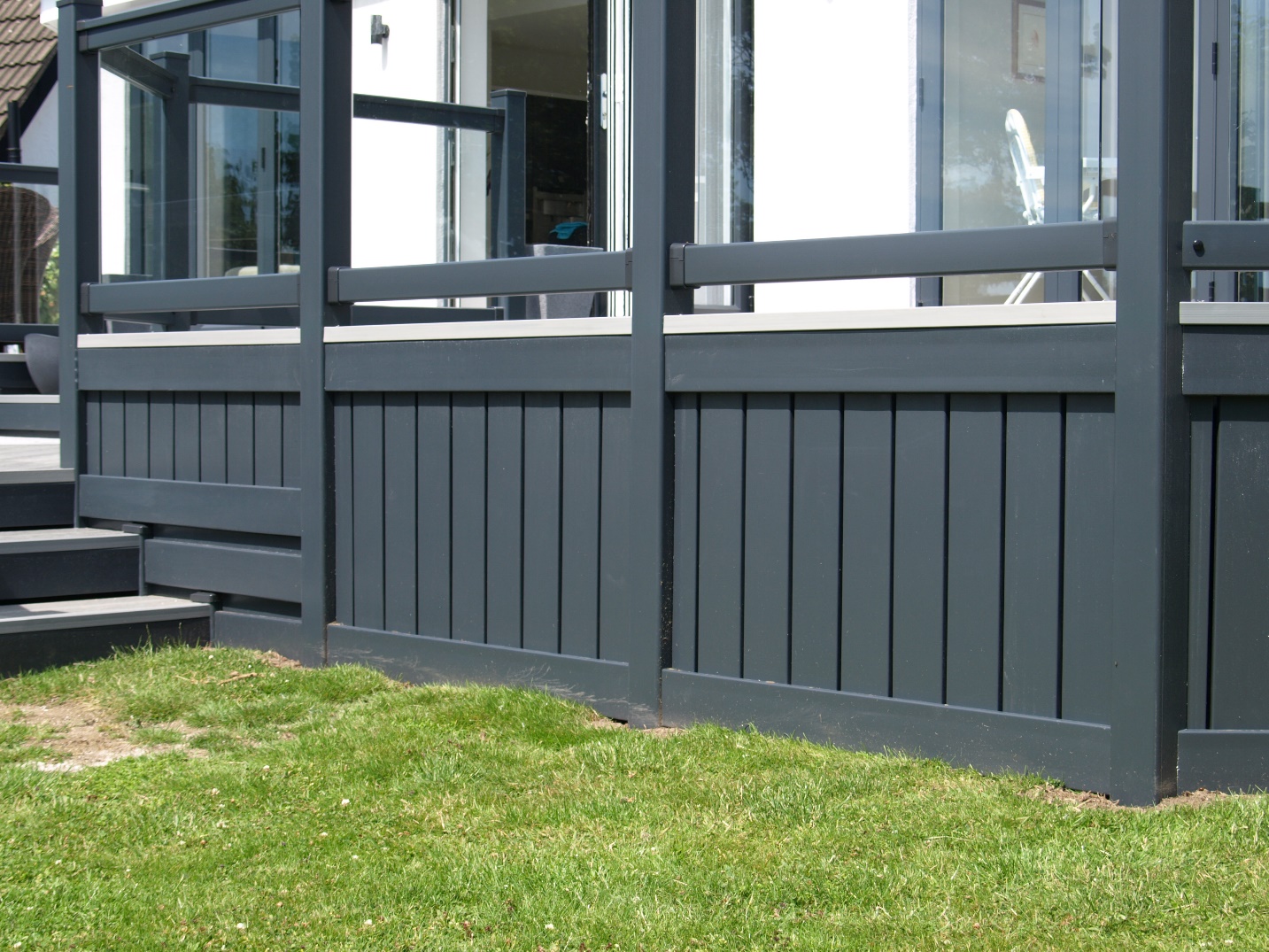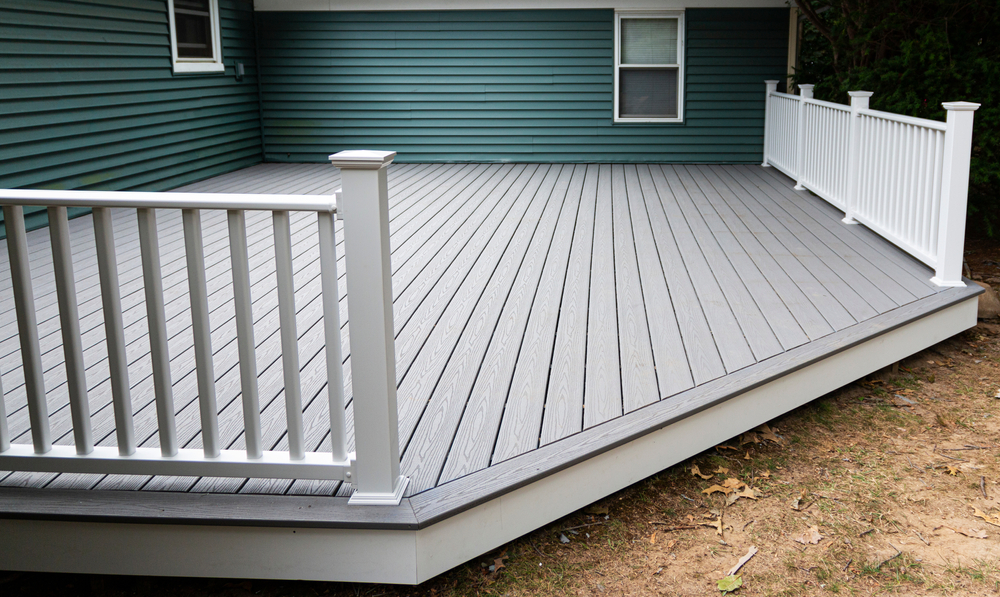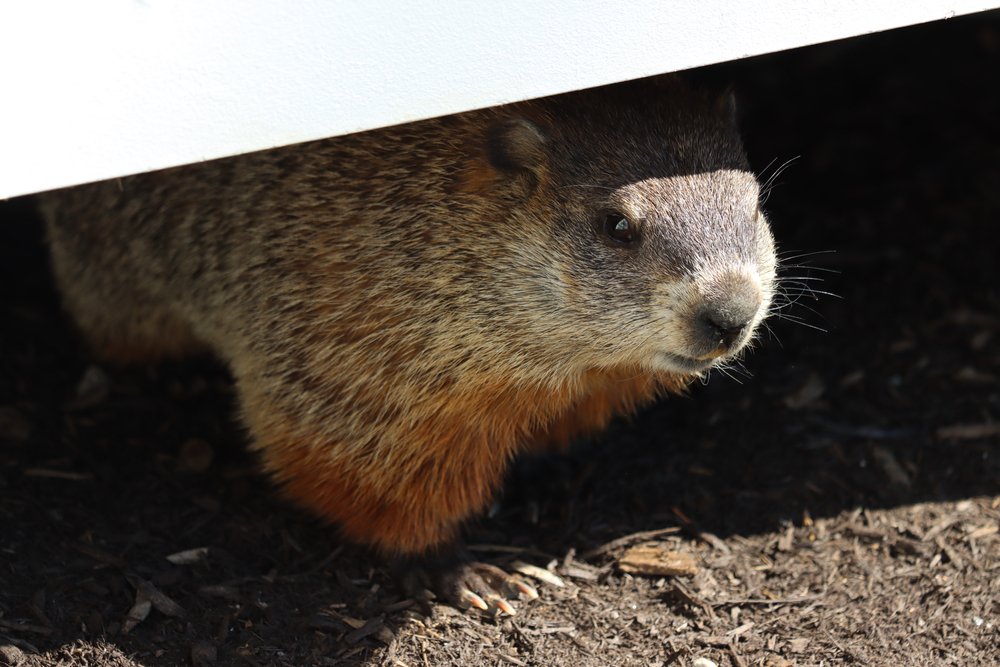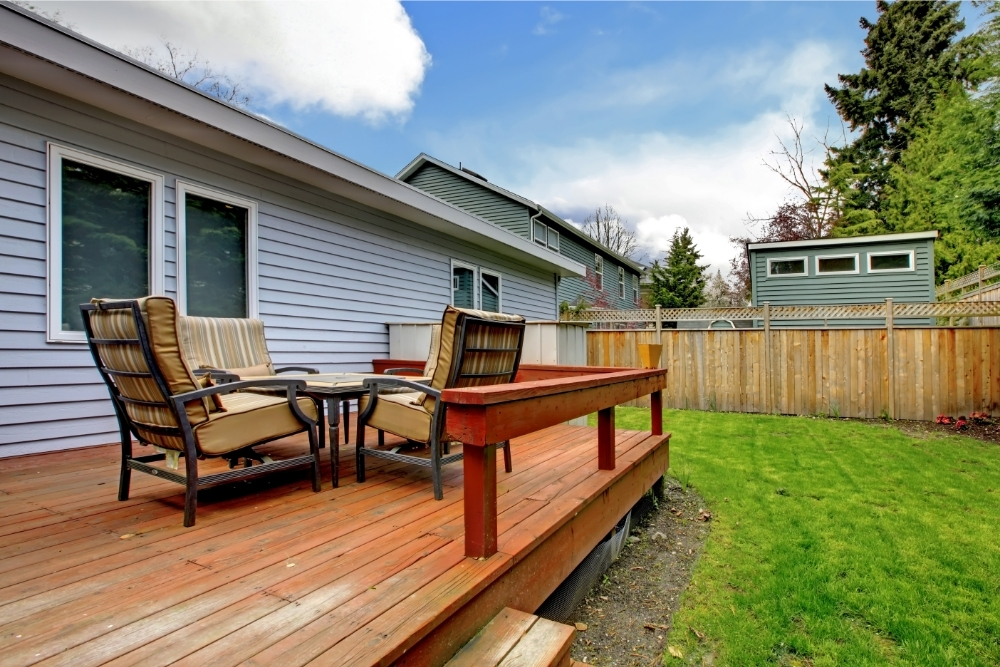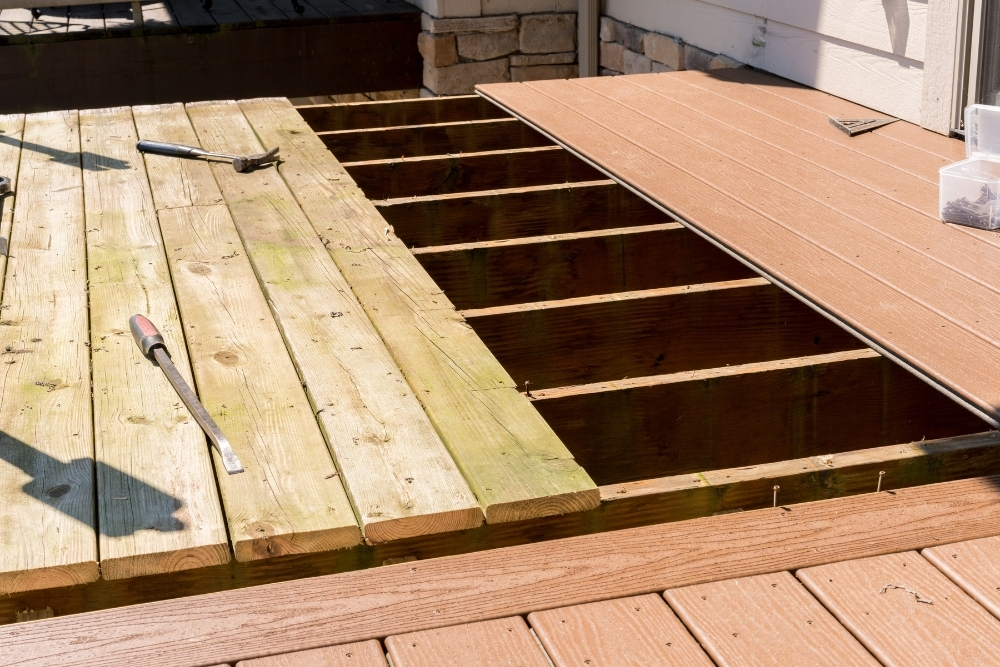Decking can make a beautiful and practical addition to any garden or home; it helps to give your backyard some much-needed depth and structure. Beyond that, decking can also make your garden look very attractive and can provide you with a space where you can entertain your various friends and family. However, this does not mean that taking care of your deck is an easy task. One part of the deck that is often overlooked by owners is the area underneath the structure.
You should put landscape material under decks. Landscape fabric is the best choice for this as it reduces weeds and insects by limiting sunlight and preventing seeds from spreading, which kills old weeds and intercepts new ones. It also doesn’t hold water; limiting rotting common with other materials (i.e. plastic).
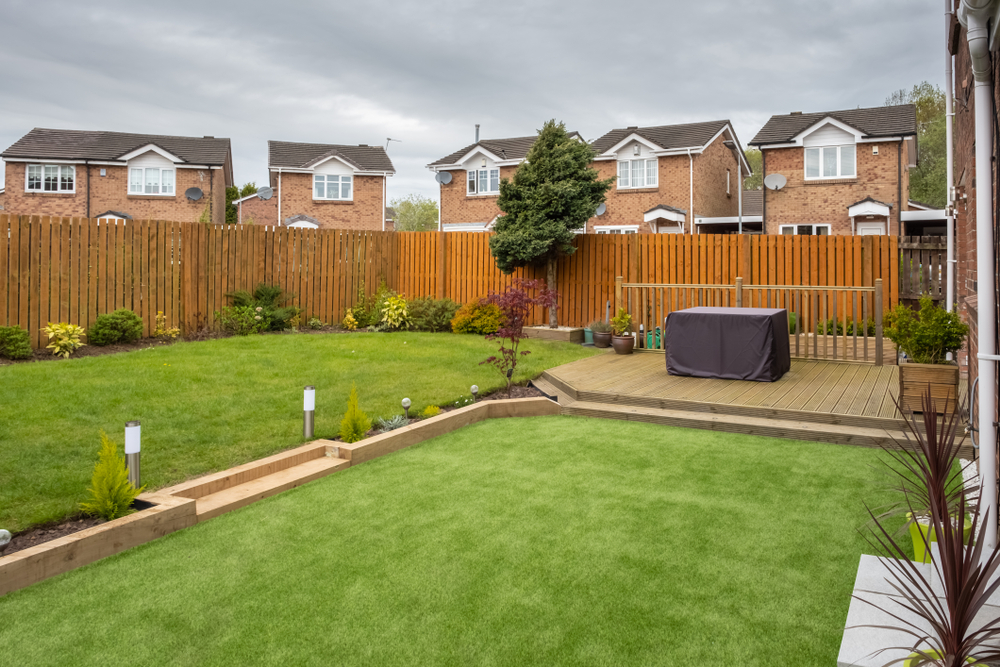
But how do you treat this area and what materials should you use to cover it? Well, there are actually a variety of materials that you can use like this one (on Amazon), with some yielding better results than others. So if you want to know which material is the best for going under your deck, then we have all the information that you need. In this article, we are going to take a look at what should be put under your deck, and how different materials can either maintain the structure or make it unusable. So if you want to keep your deck healthy and attractive, just take a look down below and find out how.
Should You Put Landscape Fabric Under A Deck?
The short and simple answer to this question is yes, you should always put landscape fabric under your deck like this one on Amazon. In fact, landscape fabric may just be one of the best materials you can use for the job, as it has been proven to be very beneficial for decking and other structures.
But why is this? Well, when it comes to using landscape materials under your deck, you are essentially trying to reduce the risk of weeds and insects, which can be a very difficult task, especially when you do not have the correct supplies for the job.
Unlike other landscape materials, landscape fabric is capable of reducing these negative effects, which means it can be extremely beneficial for both you and your decking. To help you understand the benefits of using landscape fabric, we have outlined some of its positive attributes in the section below:
Landscape Fabric Reduces Sunlight
One of the ways that landscape fabric combats weeds is by reducing the amount of sunlight underneath your deck, which can kill old weeds and reduce the possibility of new ones growing.
Although the area beneath your decking already contains a limited amount of light, this does not mean that weeds are incapable of growing there, as they only need a little sunshine to keep thriving.
Because landscape fabric is a thick and opaque material, it can be used to create a protective barrier between the weeds and the sun, which will result in the weeds starving and eventually dying.
Landscape Fabric Prevents Seeds
Another effective way that landscape fabric can be used to tackle weeds, is by covering any exposed earth beneath your decking, which can greatly reduce the possibility of new seedlings taking root.
Because the material is so thick, it can create a shield between the seed and the earth, which means the seed will be unable to penetrate or uncover the soil.
However, if you do choose to place landscape fabric under your decking, you must always make sure that there is no organic matter on top of the material. Otherwise, you could risk a weed taking root on top of the fabric, which can greatly damage it if the weed’s roots begin to breakthrough.
Landscape Fabric Does Not Maintain Water
Unlike other landscape materials that you can purchase, landscape fabric is very porous in its design, which means it is incapable of catching and maintaining water.
One of the biggest problems faced by deck owners is stagnant water, as this can cause foul odours and even degrade the condition of the decking’s wood. It also comes with the negative side effect of attracting insects such as mosquitoes, who will often lay their eggs in any stagnant water that they can find.
However, because landscape fabric drains the water, there is no possibility of stagnant water building up under the decking, which greatly reduces the possibility of insects and ensures the workable longevity of the structure.
Is Landscape Fabric Better Than Plastic?
Although landscape plastic is often considered the most common material to place under your decking, this does not mean that it is incapable of yielding negative results. In fact, landscape plastic is arguably the most inefficient material that you can use, as it not only collects water but can produce side effects such as rot and foul smells.
To help you understand the problems you could cause by using landscape plastic, we have outlined the material’s various negative effects down below, where we have detailed just how damaging this material can be to your decking and garden at large.
Plastic Can Cause Rot
Because one of the biggest negatives of using plastic is its inability to drain water, the material can produce vast amounts of trapped moisture, especially when enclosed in a small and warm space such as the area beneath your decking. Although this may not sound like an issue, trapped moisture is actually capable of making wood rot, which could render your decking ruined and unusable.
Plastic Can Cause Stagnant Water
As we have previously mentioned, plastic is incapable of draining rainwater, which means the water can pool inside the material and become stagnant. Not only can this greatly affect the condition of your decking, but it can also lead to the production of foul odours and smells, which is often the result of the stagnant water breeding various bacteria and fungi.
Plastic Can Attract Insects
Another disadvantage of stagnant water is that it can also attract various insects, with mosquitoes often laying their eggs in the putrid liquid. Although this may not seem too bad to begin with, when the eggs begin to hatch you will find yourself surrounded by the bugs, which can make sitting on your deck an uncomfortable experience.
If you wish to combat this problem, then you will have to remove the plastic and empty any stagnant water, which can be a difficult and disgusting task.
Conclusion
In conclusion, if you have decking in your garden, then the best material to place underneath it is landscape fabric, as it is capable of reducing both weeds and insects. Although landscape plastic is often favored by various homeowners, this does not mean that it is the superior choice, as it is incapable of draining water and could worsen the overall condition of your decking.

